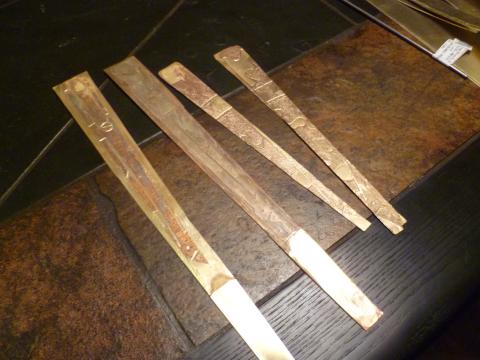
It has worked well enough, so far, but it's a bit of a messy process. With a bit under an inch between the work piece and the cathode, it takes 30-45 minutes to get a decent etch. Given that I have 28 pieces to do for the fan, this is only barely acceptable.
Gunk builds up on the cathode fairly quickly, which eventually bridges to the work piece and generates a short. I have to sit there with it and clean things off every 5 minutes. Possibly with a pump this could be improved. My power supply eventually blew its fuse, thanks to all the shorts.

The results are decent, but surprisingly rough in places. A ferric chloride etch would be much cleaner. Some of this seems to be the exact laser printer/glossy photo paper resist transfer process that I'm using. It starts to peel away towards the end of the etching process. The quality of the non-resist areas is really nice, though, giving a very smooth surface.
What are you using as resist on the edges? I've gotten increasingly acceptable results using toner for face resist and spraypaint on the back side, but nothing I've yet tried keeps the exposed edges of the material from etching away enormously, which sucks up a lot of amperage and slows down the etching process (and it appears to me that etch fineness quality depends largely on time.)
ReplyDelete